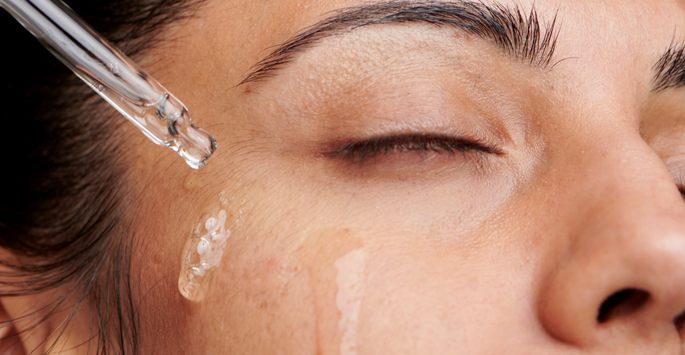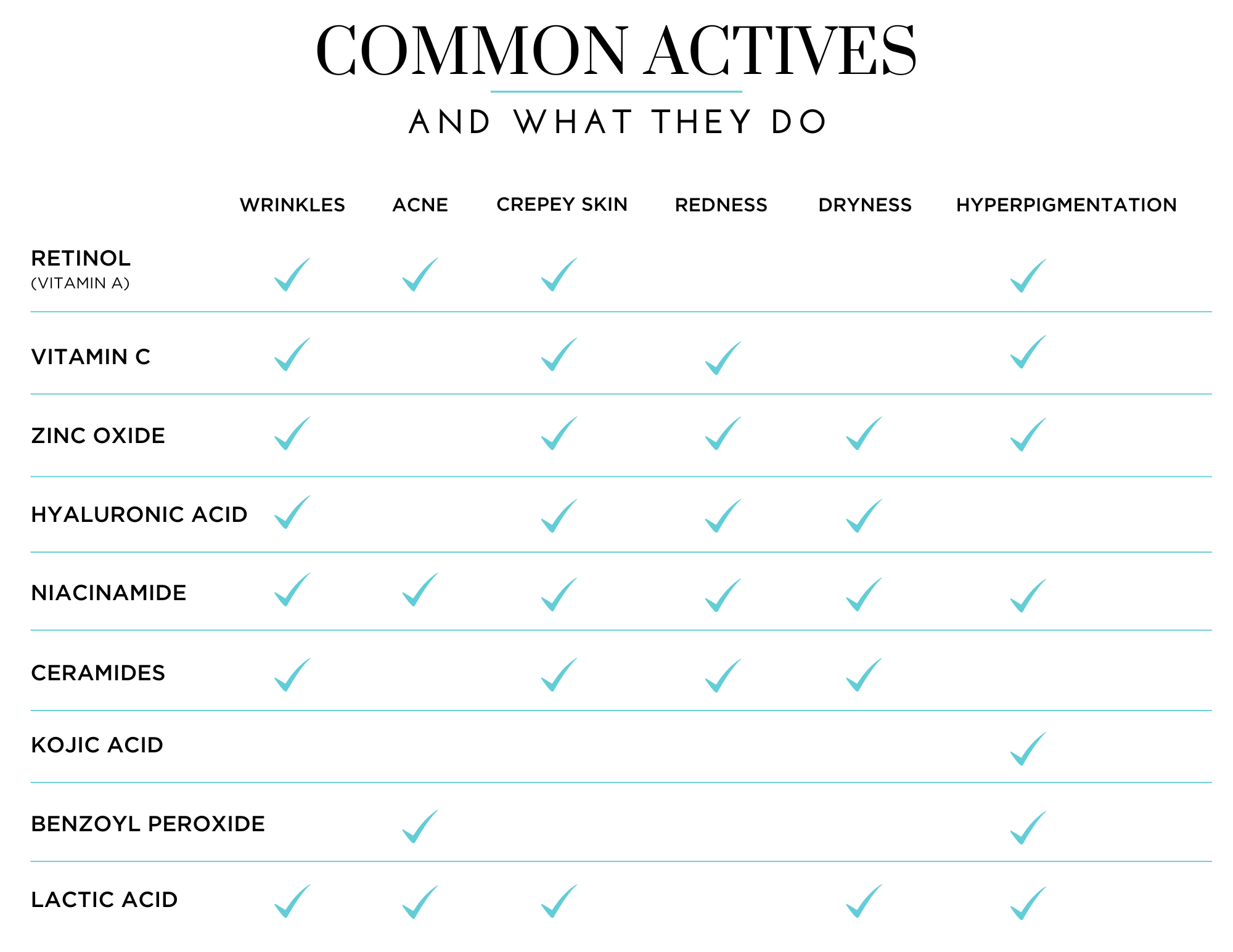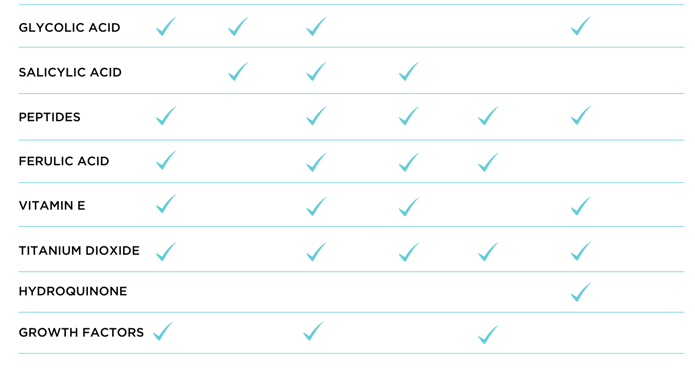
You’ve likely heard the word “actives” if you’ve gotten into skincare at all, and it can be confusing understanding exactly what an active is sometimes. While there are certain actives that we recommend for everyone (retinol), it’s important to understand the different types of actives and what they actually do (and whether or not you need them).
So what is an active?
In short, an active refers to the active ingredient in any product and how it is supposed to correct an issue with your skin. For example, if you have acne you’ve probably tried a cleanser that had salicylic acid as its active ingredient. If you’ve had a sunburn, you’ve probably used a gel that had aloe vera as its active ingredient. Essentially, it’s the most important ingredient in your product that’s intended to correct a problem.
That’s not to say that inactive ingredients don’t serve a purpose. Each ingredient serves a purpose, even if it’s not actively correcting something. Some inactive ingredients help keep the product stable for an extended period of time, and others work with the active ingredient to make sure it’s delivered to your skin safely without being too strong or weak to be effective.
Common Types of Actives
While there are a lot of actives out there, most of them can be categorized to help you narrow down which ones you’ll probably enjoy. As you’ll see, a lot of actives are multitaskers, working to correct a lot of different issues at one time. And many can be found in both prescription and non-prescription form.
- Discoloration and hyperpigmentation: this refers to age spots, dark circles, red marks (like spider veins and rosacea), and scars. Actives that work to treat issues like this are usually vitamin C, AHAs, niacinamide, or retinoids, although there are others.
- Anti-Aging: any ingredient that’s intended to plump your skin, smooth out wrinkles, and prevent future signs of aging. Actives that work for anti-aging include zinc oxide/titanium dioxide (sunscreen), glycolic acid, retinol, vitamin C, growth factors, peptides, and niacinamide.
- Acne: this includes any ingredient that works to fight active blemishes and prevent future breakouts. The best actives for acne-prone skin include benzoyl peroxide, salicylic acid, retinol, niacinamide, and AHAs. Each different active works to reduce inflammation, increase cell turnover to reduce scars, regulate oil production, and unclog pores.
- Dryness/Sensitivity: any ingredient that’s intended to gently reduce inflammation while adding much needed moisture to skin, including compromised skin from lasers or skin that’s naturally dry and sensitive. Active ingredients that correct this include soothing aloe vera, hydrocortisone, hyaluronic acid, peptides, vitamin E, collagen, ceramides, and more.
Decoding Skincare Labels
The FDA has pretty specific rules about how things can be labeled and marketed. And while it’s not the customer’s problem to understand the rules, they’re put in place precisely to protect you as the consumer.
For example, salicylic acid is FDA-approved to treat acne at 0.5%—2% (that’s the range you’ll see in most acne related skincare products). When you see it on the label of a cleanser or acne product, it’s going to be specifically called out as an active ingredient and you’ll also see the words “treats acne” somewhere in the product’s claims. That’s because it’s been tested and approved to do exactly what it says.
However, other ingredients like niacinamide are FDA-approved, but only at prescription strength levels. So if you see an over-the-counter skincare product that contains niacinamide, it’s not going to be listed as the active ingredient. Instead, it will probably just show up on the list of all ingredients or listed as a “highlighted” ingredient. It will also claim to “reduce” certain skin concerns instead of “treat” them. That’s because only FDA-approved ingredients can make the claim to treat anything.
This doesn’t mean OTC products aren't effective. It simply means they have the clinical trials of proven efficacy yet. So despite not being FDA-approved we still have an idea that it’s going to be effective for you.
Know Before You Self-Treat
In some situations, it’s clear what your skin concern is and you can pick out products that can help you. For example, if you see a wrinkle or your skin seems dehydrated, it’s a no-brainer that you’re dealing with some of the typical signs of aging and you should use a moisturizer that contains actives that correct wrinkles.
But if you’re noticing dry patches of skin that are new, unusual brown spots that are darkening or brand new, or other anomalies like a pimple that won’t go away for a long time, don’t try to wing it and self-treat.
Certain conditions, some potentially dangerous, should always be examined and treated by a dermatologist instead of trying to clear it up by yourself. Things like cancerous and pre-cancerous lesions or psoriasis need a diagnosis and intervention you simply can’t get at home.
The Most Common Actives (and what they do)
So you’ve figured out what’s going on with your skin and you want to know what works to fix it. Here’s a list of the most common actives and what each one does.

 This list is by no means complete… there are literally hundreds of actives out there. But it’s a good place to start if you’re not happy with an issue you’re seeing in the mirror and need to get started on correcting it.
This list is by no means complete… there are literally hundreds of actives out there. But it’s a good place to start if you’re not happy with an issue you’re seeing in the mirror and need to get started on correcting it.
For more information about active skincare ingredients, contact our office today to schedule an appointment with Dr. Tomar: 561.805.9399 | info@supriyamd.com.
